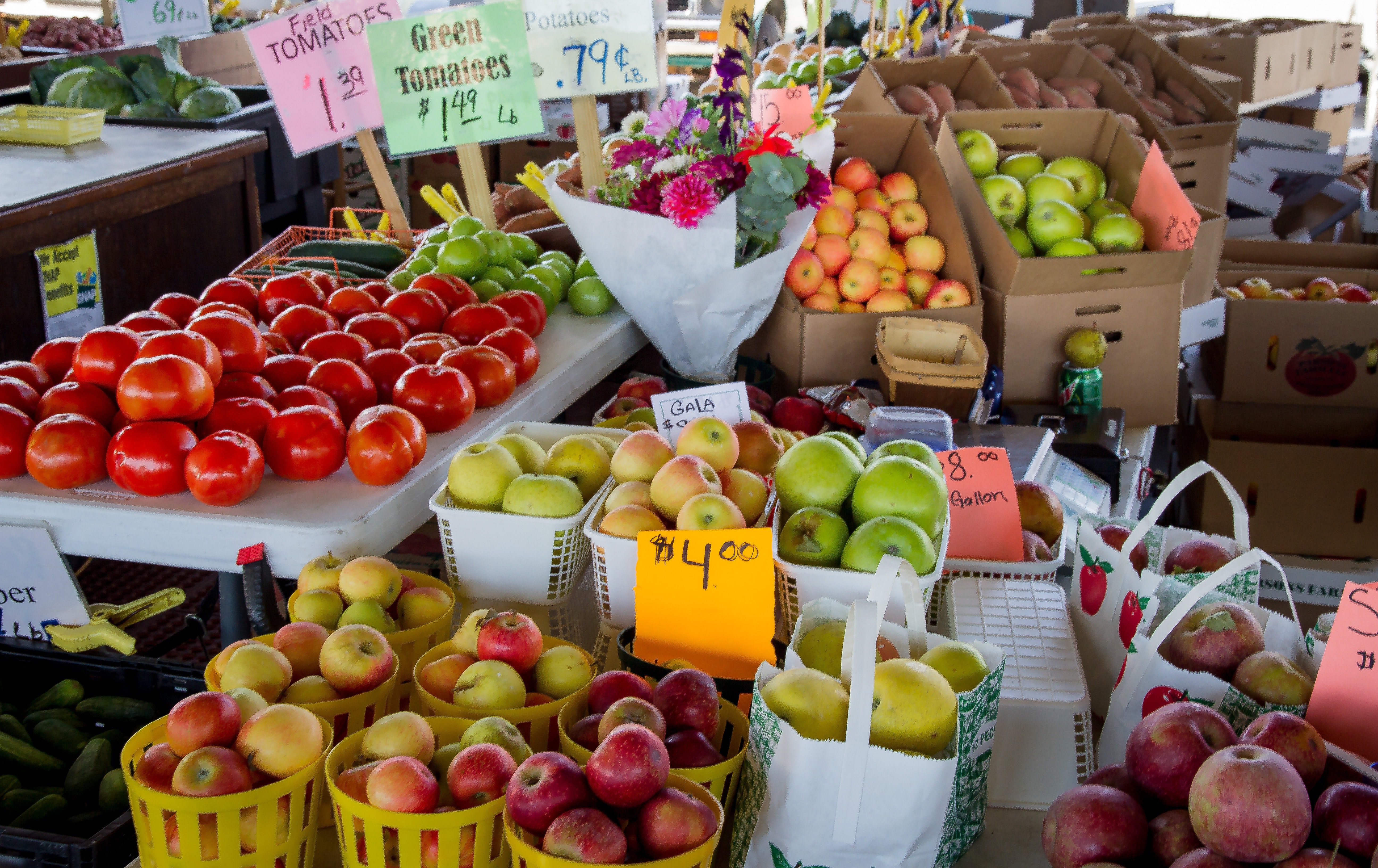The Price of Local Food: Is It More Expensive?
go.ncsu.edu/readext?944018
en Español / em Português
El inglés es el idioma de control de esta página. En la medida en que haya algún conflicto entre la traducción al inglés y la traducción, el inglés prevalece.
Al hacer clic en el enlace de traducción se activa un servicio de traducción gratuito para convertir la página al español. Al igual que con cualquier traducción por Internet, la conversión no es sensible al contexto y puede que no traduzca el texto en su significado original. NC State Extension no garantiza la exactitud del texto traducido. Por favor, tenga en cuenta que algunas aplicaciones y/o servicios pueden no funcionar como se espera cuando se traducen.
Português
Inglês é o idioma de controle desta página. Na medida que haja algum conflito entre o texto original em Inglês e a tradução, o Inglês prevalece.
Ao clicar no link de tradução, um serviço gratuito de tradução será ativado para converter a página para o Português. Como em qualquer tradução pela internet, a conversão não é sensivel ao contexto e pode não ocorrer a tradução para o significado orginal. O serviço de Extensão da Carolina do Norte (NC State Extension) não garante a exatidão do texto traduzido. Por favor, observe que algumas funções ou serviços podem não funcionar como esperado após a tradução.
English
English is the controlling language of this page. To the extent there is any conflict between the English text and the translation, English controls.
Clicking on the translation link activates a free translation service to convert the page to Spanish. As with any Internet translation, the conversion is not context-sensitive and may not translate the text to its original meaning. NC State Extension does not guarantee the accuracy of the translated text. Please note that some applications and/or services may not function as expected when translated.
Collapse ▲
Like many of us, due to the busy nature of my work, I typically do my food shopping on the weekend. One perk of my job serving as a farmers’ market manager is that I get weekly opportunities to shop at the market. But sometimes I forget to grab something I need, so I will stop at a nearby grocery store close to my house. As I was grabbing onions at the store this past weekend, I thought of a common question I hear a lot: Am I paying more for my food at the store, or at the farmers’ market? There is a perception that local foods are more expensive than nonlocal foods often sold at grocery stores. But is this true? Today we will learn about how food is produced and how these factors impact the price tag we see at the store as well as what current research says about how prices compare between different food market outlets.
Farm Finances: Putting a Price on Food
Regardless of which markets farmers choose to sell their foods at, the price of their products comes down to the cost of producing those products and setting prices that cover those costs with a margin of profit. To estimate production costs, farmers have to consider costs of inputs such as seeds, land preparation, labor required for their specific crops or animals, packaging supplies, equipment, and tools. All these factors are added up to create their budget and are used to determine the pricing needed to cover these costs and make a marginal profit. Some crops require more labor to produce (example, tomatoes are estimated to require 49 hours of labor per 100-foot row, versus watermelon which are estimated to need 4 hours for the same space). For farmers selling directly to consumers (ex. farmers’ markets, roadside stands), costs also include packaging (crates, boxes, bags), transportation, labor and time to sell at markets, equipment (tables, tents, membership fees, etc.), and advertising materials. When a farmer sells wholesale, (ex. to grocers, restaurants, and institutions like schools), they typically receive a lower price but there is reduced cost for labor and marketing, since the wholesaler covers this portion of the supply chain. To review, food pricing is determined by the cost of production, transportation, processing (if needed for the product), and marketing before it reaches us as consumers, whether we buy it at a farmers’ market or supermarket. So now that we know how pricing is determined, how do prices compare between direct markets and outlets like grocery stores?
Price Check: Are Foods Sold at Direct Markets More Expensive Than Grocery Stores?
As we have learned today, there are a lot of factors that influence the pricing of food. In addition to farm costs, local food pricing is impacted by place-specific factors, such as differing property taxes, cost of labor, and land value, so pricing will be different in every community. That being said, research has shown that, on average, local produce being sold at direct markets are cheaper than their counterparts sold at grocery stores, regardless of the time of year. A study conducted in 2011 in North Carolina found that 79% of items represented at farmers’ markets had a lower average price than at supermarkets. Another study in 2016 also in our state found that, on average, the prices of fruit and vegetables sold at farmers’ markets and roadside stands are similar to and sometimes lower than those at supermarkets, depending on the product. For foods that are higher prices at direct markets, those markets’ participation in nutrition assistance programs (ex. SNAP/EBT, WIC, Double Up Food Bucks, etc.) can also help reduce costs on the consumer end.
Today we have touched on what elements go into the price tag we see for food at markets and how pricing compares between different market outlets. This is an area of growing research, and every community will be different with regard to pricing for food. However, the value of investing in local food also goes beyond what we pay as consumers. By choosing to buy from our local farms, there is a higher chance of the “multiplier effect” occurring, which follows that money used to purchase local food is more likely to remain local and contribute to our local economy. The ripple effects of choosing to purchase local food can benefit our local food system as well as our community as a whole.
For more information on the pricing of local food and how investing in local food can impact our community, contact the North Carolina Cooperative Extension – Lee County Center and ask for Meredith Favre, our Local Foods Agent, for more information.
References




